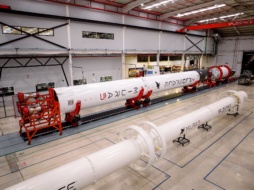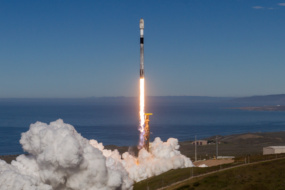SpaceX has pushed up average payload mass for Falcon 9 Starlink-dedicated launches to roughly 16,850 kg, or 96% of max capacity of 17.5 tons to LEO in a reusable configuration, maximizing every meter and kilogram offered by the rocket.
However, most customers don’t need all that capacity to LEO.
Based on publicly available data from 20 launches with published payload mass numbers over the past three years, dedicated customer LEO launches have averaged just 3,370 kg of payload, just 19% of total capacity. (Note, the figure does not include rideshare, non-LEO, or classified/undisclosed payload mass missions.)
Why underfill? Operators usually don’t fill up Falcon 9’s 17.5-ton capacity for several reasons:
- Falcon 9’s fairing volume and dimensions constraints
- They are building a smaller constellation, requiring fewer deployments per launch
- Satellite manufacturing ramp and working capital constraints
- It’s a national security or NASA science mission that needs its own ride
Falcon 9 price per kg:
- Falcon 9’s price per kg based on a max 17.5-ton capacity basis is low at ~$4,000 per kg.
- Looking at Falcon 9’s price per kg based on the average mass deployed by customers on dedicated Falcon 9 missions (3,370 kg), the average price per kg skyrockets to ~$20,770.
Customers pay $70M+ per launch, whether they fly 2,500 kg or 10,000 kg of payload.
This is the problem SpaceX’s Transporter and Bandwagon rideshare missions help to solve. The programs allow SpaceX operators to efficiently pack Falcon 9, reducing the price per kg for operators.
But for operators with satellite(s) that are too big for rideshare or have special orbital/launch needs, they are often stuck paying for a lot of unfilled Falcon 9 capacity.
Medium and Heavy Lift
Over the past decade, if you were an operator and wanted to reliably launch your satellites to orbit, Falcon 9 has essentially been the only game in town—despite the higher-than-needed capacity.
Middleweights: This could change with the arrival of reusable medium-lift rockets such as Rocket Lab’s Neutron (13,000 kg to LEO, first stage reusable) and Stoke’s Nova (3,000 kg to LEO, 100% reusable) in 2025.
If the shoe fits: Rocket Lab has priced Neutron at $50M per launch, meaningfully lower than Falcon 9’s $70M price tag. For operators who don’t need anywhere close to 17.5 tons of Falcon 9 capacity, Neutron at 13 tons per launch could end up being the less expensive option. Neutron or Nova would also be especially attractive to satcom operators who compete with Starlink.
+ The heavyweight opportunity: On the other hand, heavy-lift rockets like Starship (150 tons to LEO, 100% reusable) and New Glenn (45 tons to LEO, first stage reusable) are more economical for large constellation deployments, such as Kuiper and Starlink. The vehicles could also dramatically upend legacy mass constraints, pushing operators toward building larger, more capable satellites that exceed the capacity of medium-lift rockets.




